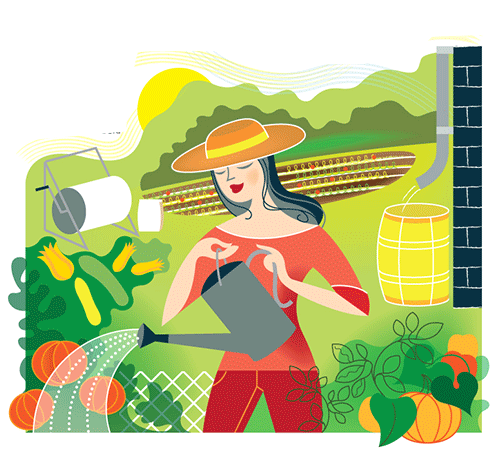
Anyone who has eaten a fresh Jersey tomato knows that the fruit (or vegetable, for those skeptics) is in a different league from the unripe, oxidized ones shipped in from California.
But it is not just about the taste. Knowing the source of your produce means you can keep tabs on pesticide use and soil management, and eating locally often means less fossil-fuel consumption:
According to the Leopold Center for Sustainable Agriculture, the average piece of fresh food has traveled 1,500 miles before reaching your dinner table. Visiting Jersey farmstands and farmers’ markets is a good start (jerseyfresh.nj.gov), but it doesn’t get any more local than your backyard. So this spring, think about creating your very own produce section. At just about every step in the process, you can make your thumb a deeper shade of green. And with all your work and care thrown in, you can expect the tomatoes to taste even better.
Compost: Create your own! Keep a bucket next to your sink for apple cores, pepper tops, eggshells, and other organic waste (other than meat). Get an outdoor compost bin or tumbler and toss in those food scraps, as well as grass clippings and yard waste. Make sure it stays damp and turn it regularly.
Fertilizer: Compost is generally packed with nutrients, but takes time to decompose. In the meantime, choose a natural fertilizer option such as bone meal to keep your garden healthy.
Plants: Choose varieties that thrive in this climate, such as Gypsy bell peppers, Seneca zucchini, Ramapo tomatoes, and dark green Italian parsley. (Rutgers Cooperative Extension has a list of ideal varieties.) Save seeds for next year.
Water: Set up a rain barrel to collect water from your downspouts (some even have hose spigots at the base). You can keep a few goldfish in the barrel to eat mosquito larvae.
******************************
Good Earth
You’d expect Ag Choice to smell ripe. It is, after all, a compost facility that draws loads of animal waste from northern New Jersey to its Andover location. But a handful of ready-to-use soil from one of its twelve rows of decaying manure and produce actually smells rich and earthy.
That’s because Ag Choice creates humified compost, which is not only approved by the Northeast Organic Farming Association of New Jersey for organic production, but is also the product of the first agricultural composting facility approved by the New Jersey Department of Environmental Protection.
Ag Choice owner Jay Fischer, who grew up in the area and worked on farms as a kid, started the venture with his wife, Jill. They partnered with Rutgers University, the DEP, and the state Department of Agriculture to create eco-friendly compost—and simultaneously reduce air and water pollution from manure that piles up on local farms, releasing methane, ammonia, and sulfur dioxide.
Go to ag-choice.com for a list of retailers. “We want to be the model facility for clean, conscientious composting in New Jersey,” Jill says.
—Jen A. Miller
